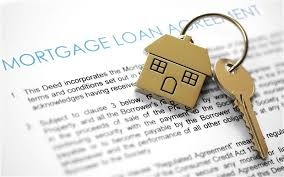What's The Best Amortization Period For You?
Posted by Call Centre on Thursday, June 6th, 2019 at 4:18pm.
 According to The Bank of Canada's recent financial review, the number of people choosing amortization periods longer than 25 years rose by 10% in 2014-2015. Almost half of all uninsured mortgages in this country are now amortized over 30 years which is in direct correlation to high prices. Having your loan spread out over such a long period of time certainly keeps the monthly payments down. It is also helping to keep the rate of delinquent mortgages down as well. However, because the debt is being paid back at such a slow rate, it leads to a higher overall level of indebtedness in Canadian households. Whether buyers choose to spread out payments or are forced to, the 30-year amortization is becoming pretty stand.
According to The Bank of Canada's recent financial review, the number of people choosing amortization periods longer than 25 years rose by 10% in 2014-2015. Almost half of all uninsured mortgages in this country are now amortized over 30 years which is in direct correlation to high prices. Having your loan spread out over such a long period of time certainly keeps the monthly payments down. It is also helping to keep the rate of delinquent mortgages down as well. However, because the debt is being paid back at such a slow rate, it leads to a higher overall level of indebtedness in Canadian households. Whether buyers choose to spread out payments or are forced to, the 30-year amortization is becoming pretty stand.
For informational purposes only. Always consult with a licensed mortgage professional before proceeding with any real estate transaction.
What Different Amortization Periods Are There?
The amortization schedule will show the exact amount of principal and interest that will make up each payment. At the beginning of the loan, more of each payment will be interest and over time, the amount of the payment that goes towards the principal will increase. Loans with a longer amortization period will have smaller monthly payments because the total amount is spread out over more time.
The most common amortization period in Alberta is 25 years, but there are other options available. In Canada, the maximum amortization period was 35 years, but this was reduced to 25 years in 2012 for those who were putting less than 20 percent down on the purchase. For those who can put more down, some lenders may accept a longer period. Buyers should be aware that long periods also come with more interest over the life of the mortgage. Shorter periods of 15, 10, and even five years are available, and these can be great options for buyers who have substantial down payments and can enjoy paying less interest without overbearing monthly payments.
What's Right For You?
To be clear on the definition, amortization is the length of time it will take for you to pay back the mortgage loan. Setting the time will help determine what your monthly principal plus interest will be. At the beginning, your payment will be mostly interest with little principal. Then as time goes by the balance of power shifts and you pay less interest, more principal. This is not to be confused with the term of a mortgage. The term can be six months, a year, five or ten years with an assigned interest rate attached to it. The term is that portion of time that you have an agreement with your mortgage lender. After the term is up, you can renew. Why do you need a term? With fluctuating interest rates, a volatile market with fluctuating home prices, a term will protect both you and your lender. You are also welcome to take your mortgage elsewhere at the end of a term, or pay off your entire mortgage penalty free at the end of the term. You can also renegotiate the length of your amortization period.
So, onward to amortizations. If you're looking at buying a home a 30-year amortization period isn't even an option for you unless you have a 20% down payment. If your down payment is less than that your only option is 25 years. This may mean the difference between being able to purchase a home or not. If you need to keep your payments down it's best to wait until you can scrape together an appropriate down payment. The downside of course, is that over the course of the 30 years, you will be paying more interest. Actually, for a time lenders were even providing 40 year amortization periods. Depending on the size of your mortgage, it could mean you'll be paying tens of thousands of dollars more. That's tens of thousands of dollars you could use for other big ticket items or even retirement. However, there are also long-term strategies to mitigate this financial bleeding no matter how long the amortization period is.
Make Extra Payments
This is an option if you have a little wiggle room in your annual household budget. Make payments every two weeks instead of once a month. For example, say your principal and interest payments were $1,500 a month. That's $18,000 dollars you would pay annually. Break than down to $750 every two weeks and you would have paid $19,500 at the end of the year. You would also knock off a little bit more principal using this method.
Be Vigilant About Prepayment Privileges
Check the fine print of your mortgage. Many lenders will let you put some extra towards your principle on an annual basis and not assess a penalty. If you can afford it, throw some extra money on your mortgage once in a while. Really, $20 here, $20 there – it doesn't sound like much but over time it can add up.
Fearlessly Shop Around
Your needs can change over time, so when you term is up don't be afraid to shop around for better rates, better payment privilege and other options that are in your best interest. You can even shorter your amortization if you want or increase the frequency of your payments.
For informational purposes only. Always consult with a licensed mortgage professional before proceeding with any real estate transaction.
